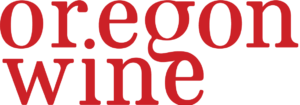Alcohol’s Influence on Sensory Development
The impact of grape ripening has numerous significant chemical and sensorial aspects of wine. Seasonal variation, vineyard location, and grape variety all impact the extent of ripening, commonly referred to as “hang time,” that can occur. Within the past 10 years, the production of higher ethanol content wines from fruit that has undergone hang time has become more common. Little research has been done to evaluate the impacts of hang time on grapes and wine. In this presentation, the impacts of ripening and ethanol concentration on the wine chemical and sensory composition will be discussed in relation to Washington state Merlot, Syrah, and Cabernet Sauvignon grapes. In each experiment, fruit was picked at three different soluble solids (20, 24 & 28 Brix) over a 55 to 66-day period. Further in each experiment, the amount of ethanol produced was controlled by sugar addition (chaptalization) or juice removal and water addition (saignée-water back) prior to fermentation. The results of these experiments will be discussed with regard to how hang time and ethanol concentration influences sensorial aspects of wine and how color and tannin changes during ripening and wine aging.

Leave a comment